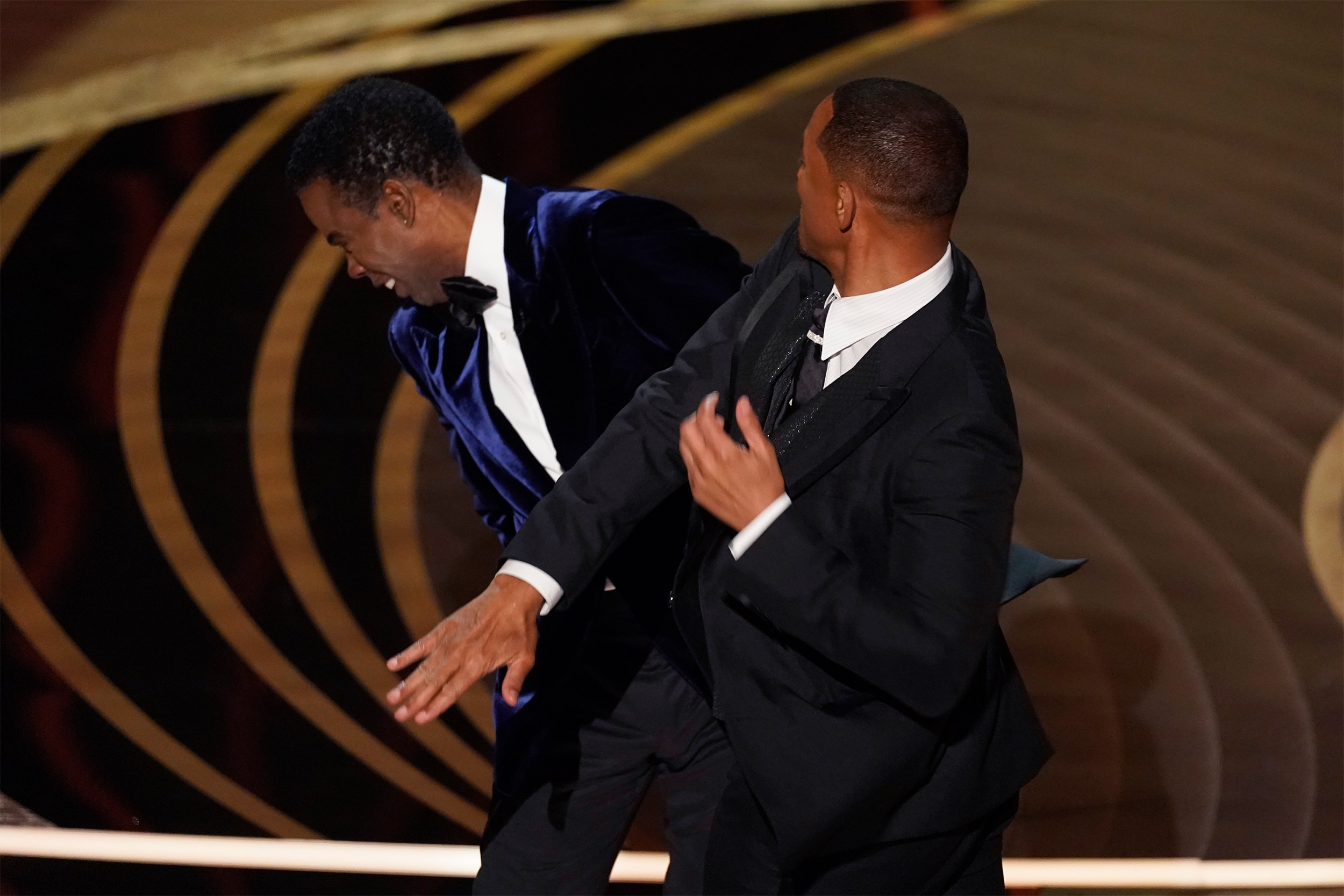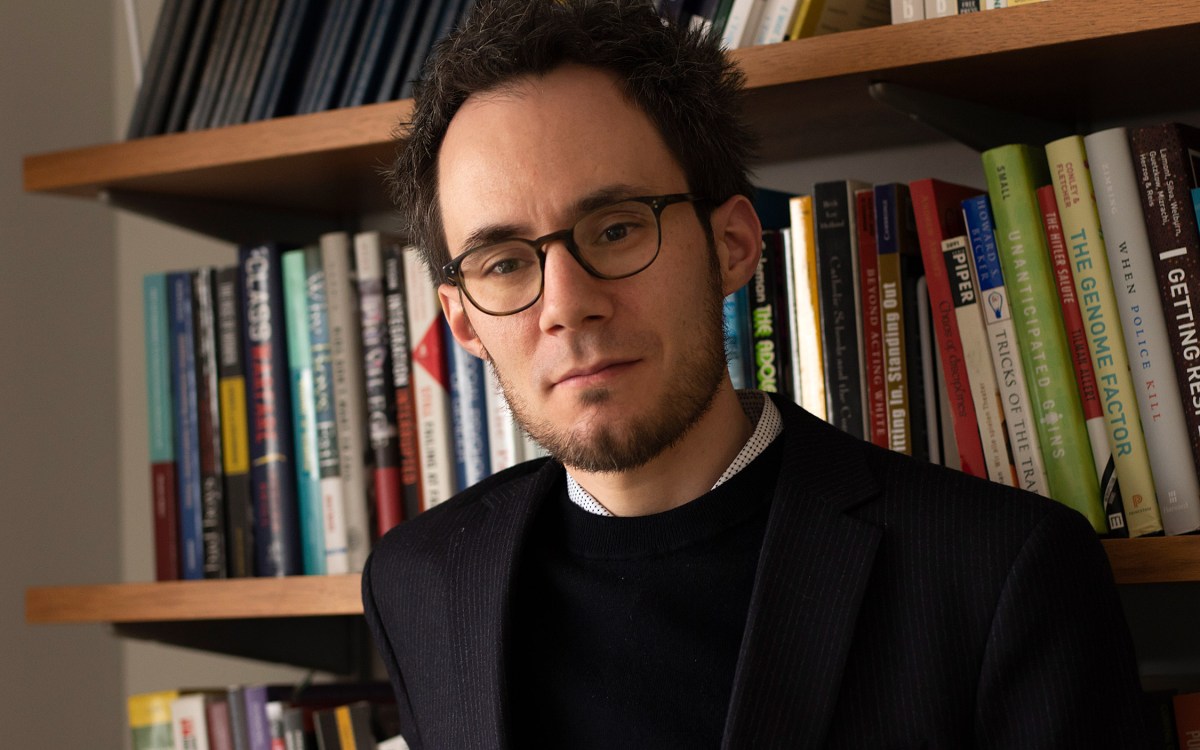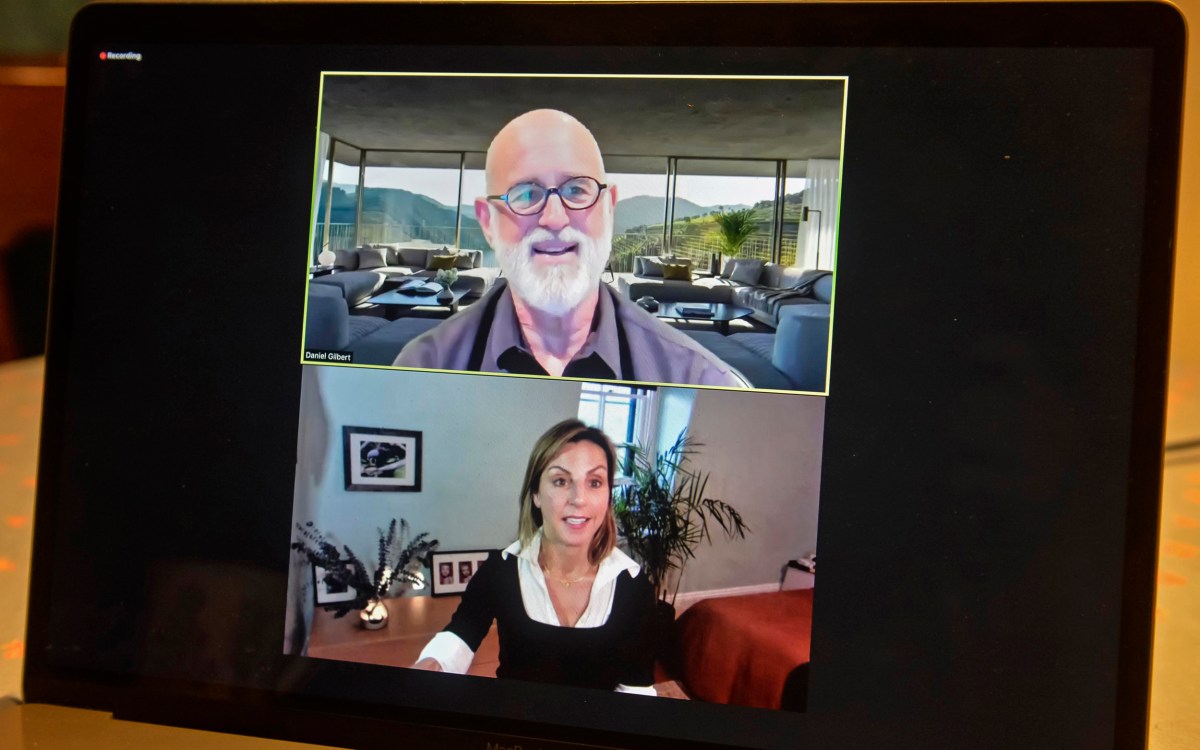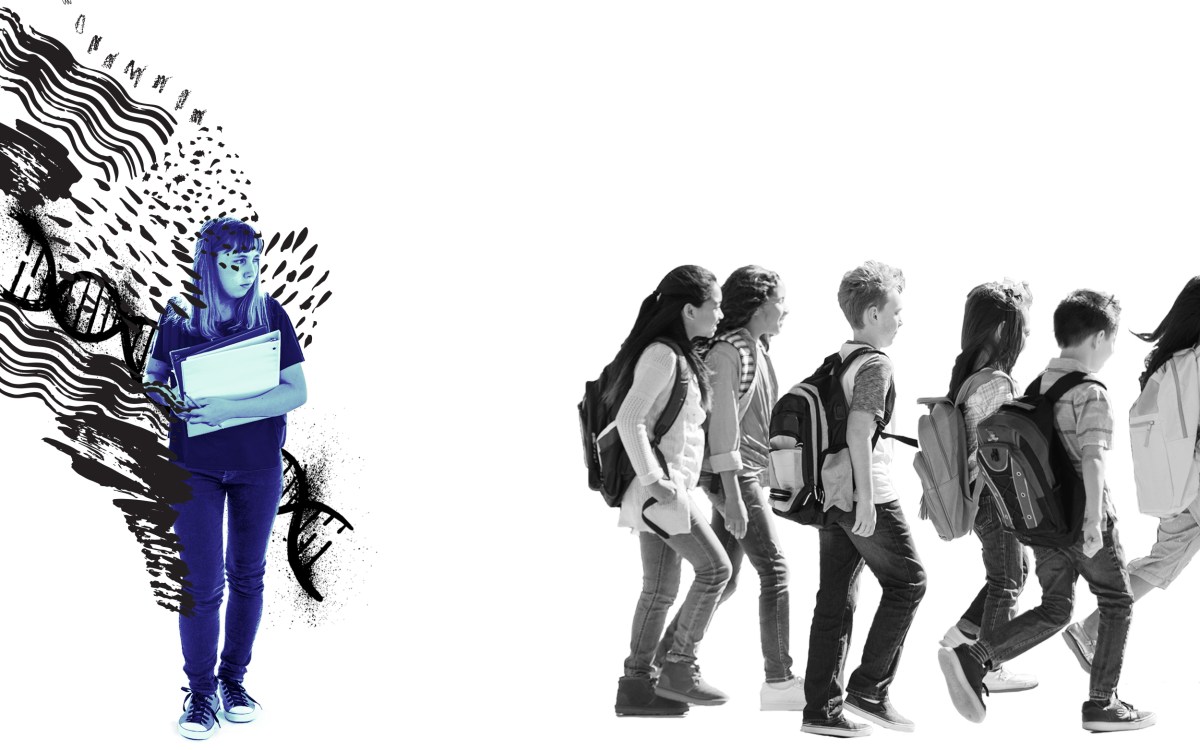
A Harvard psychologist explains the biology behind Will Smith’s behavior when he struck Chris Rock onstage at Sunday night’s Oscars.
AP Photo/Chris Pizzello
Wait — what if Will Smith was just being a man?
Psychologist who works with adolescents reflects on messages boys receive about male aggression as world reacts to violence at the Oscars
Following the “slap heard round the world” at the Oscars, viewers wondered what was going through Will Smith’s mind when he assaulted the comedian Chris Rock. In his best-actor acceptance speech, Smith, who now faces disciplinary action by the Academy of Motion Picture Arts and Sciences, said that he was defending his wife, Jada Pinkett Smith, whose hair loss due to alopecia was the target of an on-air barb from Rock. In the days since, the episode has sparked discussion and debate around a wider issue: society’s socialization of boys and men for violence, protective or otherwise.
The Gazette spoke with Anna Precht, an instructor in psychology at Harvard Medical School and program director of McLean Hospital’s 3East Boys Intensive Program, designed to help struggling adolescents. Though frowned upon in many segments of society, violence remains a primary feature of messaging around masculinity, she said — on the playground, in movies, and perhaps even in the home. The interview was edited for clarity and length.
Q&A
Anna Precht
GAZETTE:Everyone, of course, has seen the Will Smith-Chris Rock incident —
PRECHT: Debacle.
GAZETTE: Debacle. One thing that struck me was Smith’s contention that his motivation was to protect his family and how those of an older generation were taught it’s good to protect your family — though in any era walking up on stage and smacking the host would not be considered cool. Does this incident relate to the way men and boys are socialized?
PRECHT: I love that you’re asking this question. I’m seeing teenage boys, young men, every day and we talk about this actively. Independent of gender, humans are wired with emotions and urges to protect ourselves and others when there’s a real threat present. That’s evolutionarily adaptive and part of our biology. That said, I was thinking about this yesterday: It is harder for me to imagine a female actor striking a female comedian who made a comment or a bad joke. Then I start thinking: Is gender a piece of this? I believe, absolutely, that boys and girls receive different messages about aggression, violence, and how it pertains to their identity from a very young age.
GAZETTE: How are boys and girls socialized differently around violence?
PRECHT: I want to acknowledge first that we’re framing this in a binary way — men and women. That said, I think men and boys historically, typically, have been given the message to varying degrees, that “being strong” is a crucial characteristic of masculinity. We see this conveyed to infants even. We’re more likely to call infant boys “strong” and girls “pretty.” This continues and grows through childhood. Where it gets more problematic is the way in which “strength” is equated with aggression, as opposed to strength being about communicating and solving problems with words or even walking away. Society — I mean families, schools, the media — tells boys to “be a man” and assert themselves in aggressive ways. Action is the language that they’re taught most clearly. Girls are taught — again, typically, historically — to get along, to keep the peace, don’t rock the boat. It’s a striking difference that manifests itself in many different ways across a child’s development. From the boys in my program, I hear about their experiences with bullies on the playground, and how these emotionally sensitive kids might not show aggression and get punished very clearly by their peers and maybe even by authority figures.
GAZETTE: For not being aggressive — not standing up to bullies?
PRECHT: Boys are taught to fight back and to “be a man.” When they don’t, they get punished. But back to your question about protection: Does a woman need to be protected — with violence — from a comment? The use of aggression to “protect” when protection isn’t needed is harmful to both men and to women. And it comes from the paternalistic assumption that the woman needs to be rescued. Capable women are then undermined, fragilized in those instances. I don’t know Will Smith, and I haven’t talked to him about this, but I’m curious about what happened in that moment. Because I imagine in a cooler, calmer moment, he would acknowledge that a joke is not actually a threat. That’s where, as a psychologist, I ask, “What happened there?”
GAZETTE: It does seem there is also a counter message being sent, throughout society, that violence is never good. Has this been changing over recent decades for both men and women?
PRECHT: I think the answer is yes. When I’m having conversations with the boys and young men in my program here at McLean, we’re talking about emotions other than anger. We’re talking about the value of being vulnerable. Even you and I talking this morning, that represents some change.
I think the change is different for men and women. In recent decades, I think women have seen more portrayals of themselves as powerful. There is a push for more balanced representation of women, even in the face of strident opposition at times. And, as far as there is to go for women, it’s hard to find the flip side of similarly balanced portrayals for men, the role models for vulnerability, media representations of nonaggressive men.
The phrase “toxic masculinity” has been gaining traction, and the fact that’s even in our lexicon points to a change in the trajectory. People are discussing gender and gender identity. I think fathers are observing the ways that their own socialization around anger and aggression are causing them problems. But as we look around the world, men are still asserting power and strength through aggressive and violent means. I turn on the news this morning and I see ample evidence of exactly what we’re talking about, both in our country and in the world. It’s hard to say that things are changing for the better, and some people might say “no, they’re not” when looking at the world. But I’m looking for the “yes” — and the hope.
GAZETTE: Are there other takeaways for people who may be trying to make sense of this beyond the moment? What else should we be thinking about?
PRECHT: When I talk about it here with the kids, I think about how it can be daunting, overwhelming. I think about how we change something that is so pervasive, that is so old, that is so global. We do need to push for change, and we can do that in small, individual ways and in the way that we think about and talk to boys about emotions and behavior, the way we role model for them, the way we talk about the characteristics we want to reinforce. And we can support programs that show a more balanced, multidimensional model for boys and men, and harness some of the hope that we have for change, to counterbalance the darkness that we see.







